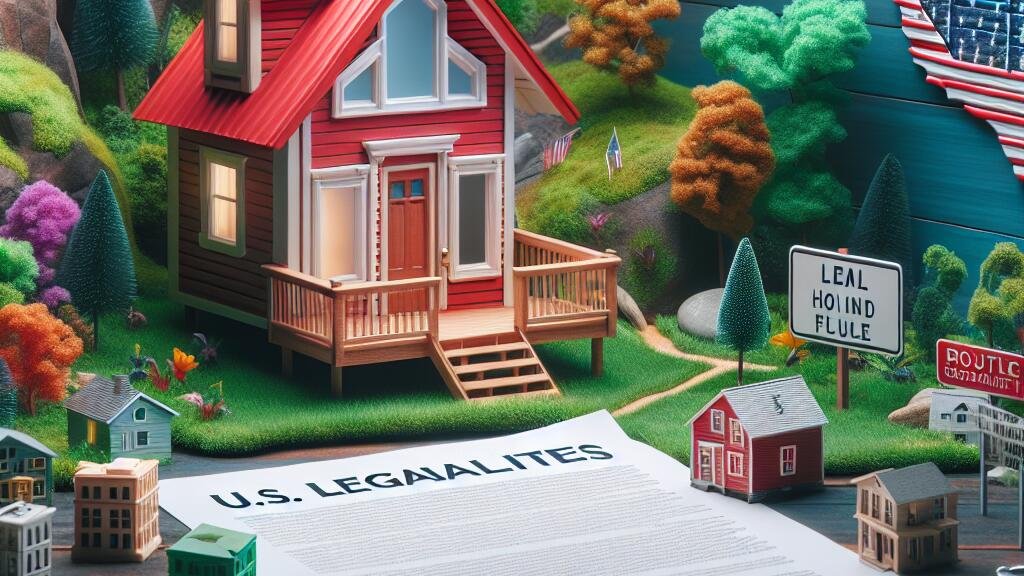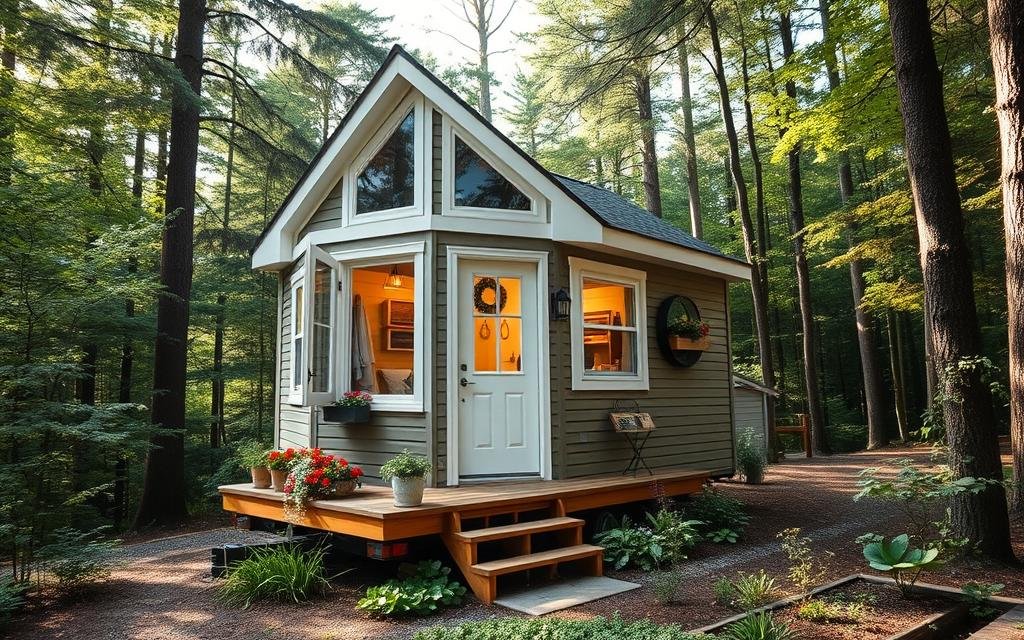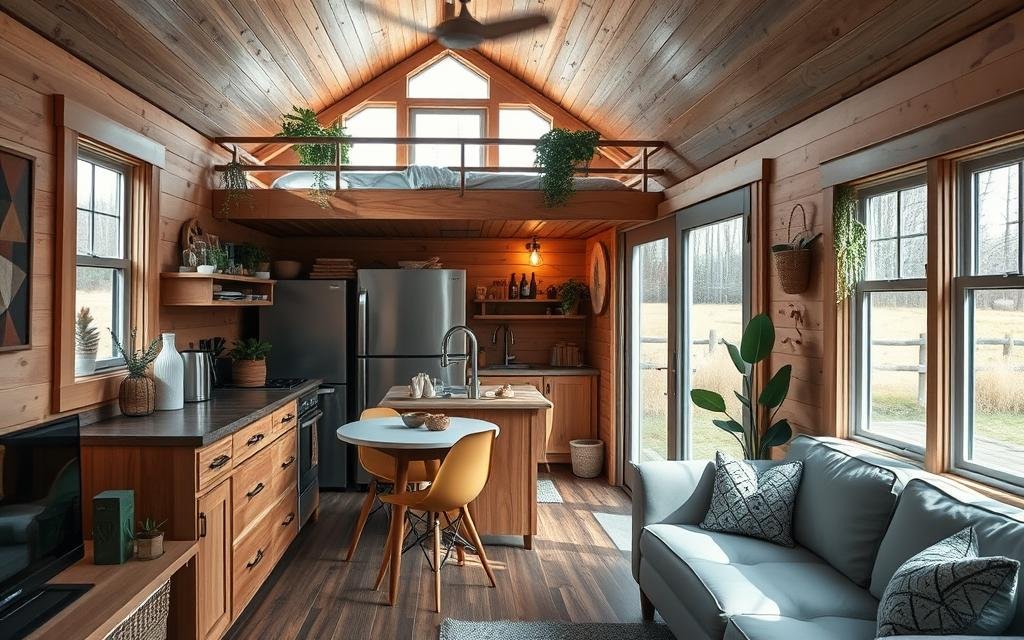Table Of Contents
Understanding Tiny House Legalities: Zoning Laws and Regulations Across the U.S.
Key Takeaways
- Comprehending Tiny Home Regulations in the United States
- Land Use Rules Impacting Small Dwellings
- Small Dwelling Laws Varying by Region
- Maneuvering Approvals and Construction Standards
- Obstacles in Compact Housing Development
Tiny House Legalities: Zoning Laws And Regulations Across The U.S. | Understanding Tiny House Legalities in the U.S.
Understanding the intricacies of Tiny House Legalities: Zoning Laws and Regulations Across the U.S. is essential for anyone considering tiny-house living. These zoning laws and zoning regulations vary widely from state to state, influencing where tiny homes can be placed and how they can be constructed. Local zoning restrictions and zoning ordinances often dictate the minimum size for residential structures, which can pose challenges for the tiny-house movement. Some areas embrace tiny homes as a solution to housing shortages, while others impose strict regulations that limit their viability. Navigating these complexities is crucial for potential tiny home owners, as compliance with zoning requirements is key to achieving successful and sustainable tiny house living.

Tiny House Legalities: Zoning Laws and Regulations Across the U.S. | Overview of Tiny House Laws
The tiny home movement has gained significant traction across the United States, leading to a complex landscape of Tiny House Legalities: Zoning Laws and Regulations Across the U.S. Each state and municipality has unique zoning codes and ordinances that dictate where tiny houses can be placed. These laws often classify tiny homes as single-family dwellings, impacting their legality in residential areas. Understanding these building regulations is crucial for anyone looking to navigate the challenges of establishing a tiny house in compliance with existing laws.
Zoning laws are integral to the development and placement of tiny homes. The United States Department of Housing and Urban Development’s regulations provide a framework, but local ordinances can create variations. Many jurisdictions require a building permit for tiny houses, ensuring that these structures meet safety and zoning standards. Compliance with both national building codes and local regulations is essential for the success of the tiny house initiative, impacting how these homes are perceived and integrated into various communities.
Importance of Zoning Laws
Zoning laws play a crucial role in shaping the landscape of Tiny House Legalities: Zoning Laws and Regulations Across the U.S. These laws dictate where tiny houses can be placed, often influenced by local ordinances and jurisdictions. Different neighborhoods may have restrictive covenants that either support or hinder the establishment of tiny homes. In areas with limited housing options, such as urban settings dominated by apartments and traditional housing, these regulations can significantly impact housing affordability.
Understanding zoning laws is essential for anyone interested in modular housing or tiny homes. The Department of Housing and Urban Development (HUD) oversees guidelines that can affect tiny homes, just as it does for modular homes and mobile home parks. Landlords and developers must navigate this complex legal landscape to ensure compliance, balancing it with the growing demand for alternative housing solutions. As legislation evolves, adhering to zoning laws becomes increasingly vital for the success of tiny house living across the nation.
Zoning Laws Affecting Tiny Homes
Tiny house legalities: zoning laws and regulations across the U.S. create a complex landscape for those seeking to build or reside in compact spaces. Many jurisdictions view tiny homes as mobile homes or as part of residential construction, leading to varying interpretations of zoning regulations. Bedrooms often play a crucial role in defining these structures, as regulations may impose limits on occupancy and usage. While some states embrace tiny house zoning as a means to promote affordable housing and sustainable housing solutions, others consider tiny homes as illegal constructions, complicating the journey for potential homeowners. Understanding tiny house laws and the specific regulations that apply to residential property is essential for navigating this evolving market.

Residential Zoning Regulations
Residential zoning regulations play a crucial role in shaping the landscape for tiny houses throughout the United States. Tiny house legalities: zoning laws and regulations across the U.S. can be complex, as these laws vary not only by state but also by county. Tiny house owners must navigate different residential zoning rules that dictate where they can legally establish their homes. These regulations often determine the size, type, and placement of tiny houses within designated areas, impacting the potential for tiny house rentals and the establishment of tiny house communities.
Understanding the implications of residential zoning is essential for anyone interested in the tiny house initiative. Tiny house building frequently faces limitations based on local ordinances, creating challenges for potential tiny house owners. Many tiny house states have embraced these small houses, but specific zoning laws can restrict their use in certain neighborhoods. As a result, tiny house needs must be carefully assessed to ensure compliance with local zoning regulations while fostering a thriving tiny house community.
Mixed-Use Zoning and Tiny Houses
Mixed-use zoning allows for a blend of residential and commercial spaces, providing unique opportunities for tiny house builders. This zoning type can be beneficial for tiny home owners looking to establish tiny dwellings in areas that may not be strictly residential. However, navigating the legal building restrictions associated with mixed-use zones can be challenging. Local zoning offices often impose specific zoning limits, which can affect tiny houses construction and force tiny home dwellings to comply with additional tiny house measures.
The tiny house society is increasingly exploring mixed-use areas as feasible options for living. Small house initiatives in these environments often face hurdles regarding regulations and planning. Tiny home dwellings may be permitted, but only under strict guidelines that vary by locality. Awareness of Tiny House Legalities: Zoning Laws and Regulations Across the U.S. is essential for those interested in this lifestyle. Understanding the nuances of mixed-use zoning can empower tiny home owners to create their ideal living situation while adhering to the necessary legal framework.
Tiny Home Legislation by State
Understanding the landscape of tiny house legalities is crucial for tiny homeowners and tiny house enthusiasts seeking to navigate the complexities of zoning laws and regulations across the U.S. Each state presents different zoning conditions affecting tiny house builders looking to create small homes or join a tiny home community. Some states offer a supportive environment with few regulations, while others impose strict residential zoning designations that can hinder the development of tiny house hotels or community projects. Familiarity with local zoning requirements is essential for those embarking on a tiny house adventure, as varying building laws can influence the viability of their tiny home build or participation in established tiny home communities.
Popular States for Tiny House Living
States such as Oregon, Texas, and California have emerged as popular choices for tiny house living due to their progressive attitudes towards tiny home development. Tiny house dwellers in these regions enjoy a landscape of supportive local zoning ordinances that often accommodate compact dwellings. Notably, Oregon has cities like Portland that have embraced tiny home initiatives, allowing tiny homeowners to place their legal dwellings on private lots. Texas also offers significant flexibility with its expansive land areas, attracting many tiny house builders and tiny home residents seeking to establish their foothold.
Florida has also seen a rise in tiny house hotels, further showcasing the growing acceptance of this lifestyle. The local zoning department in many areas has begun recognizing tiny homes as viable housing solutions, resulting in favorable conditions for tiny house legalities. While each state presents unique challenges, tiny house owner opportunities are abundant in these regions. Understanding the intricacies of Tiny House Legalities: Zoning Laws and Regulations Across the U.S. is crucial for anyone considering a move to these popular states.
- Oregon offers supportive zoning laws, particularly in cities like Portland.
- Texas provides large expanses of land for tiny house placement and development.
- California’s innovation hubs present a strong community for tiny home living.
- Florida features tiny house hotels, highlighting the lifestyle’s growing popularity.
- Washington has a variety of rural areas that are accommodating to tiny homes.
- North Carolina boasts a blend of urban and rural settings ideal for tiny house dwellers.
- Colorado is known for its outdoor lifestyle, attracting tiny house enthusiasts seeking adventure.
Unique Regulations in Each State
Each state in the U.S. has its own regulations that impact tiny house hopefuls seeking to embrace full-time tiny-house living. The legal nuances surrounding tiny homes can vary significantly. Some states impose restrictive regulations, such as minimum house size requirements or specific zoning districts that limit where tiny living spaces can be established. These variations highlight the importance of understanding local laws to navigate the complexities of Tiny House Legalities: Zoning Laws and Regulations Across the U.S.
Building restrictions can also differ widely from state to state. While some regions are becoming more accommodating to the tiny home society, others maintain stringent rules that complicate construction and placement. Tiny house enthusiasts may find certain areas more favorable due to less restrictive regulations. This growing interest in small home living means potential residents must stay informed about state-specific laws to make the process of tiny home living easier and compliant with local standards.
Navigating Permits and Building Codes
Understanding the interaction between tiny house legalities and building codes is essential for anyone participating in the tiny home revolution. As tiny home dwellers navigate the landscape of tiny living, they must comply with local building regulations and state regulations that can vary significantly across the U.S. Legality details often hinge on the intersection of federal laws and regulations specific to residential zones. Many aspiring residents of tiny dwellings find their plans complicated by the need for permits, especially if they intend to establish tiny living hotels or pursue tiny home full-time occupancy. Without a clear grasp of these complexities within Tiny House Legalities: Zoning Laws and Regulations Across the U.S., potential homeowners may face unexpected legal hurdles.
Essential Permits for Tiny House Construction
Navigating the tiny house legalities can be complex, particularly regarding the essential permits required for construction. Tiny house kits often come with recommendations for compliant building practices, yet state law can vary significantly. Understanding the regulations governing small spaces is crucial, as local regulations dictate whether a tiny house qualifies as a legalized structure or must be classified as an illegal home. These differences impact whether your tiny residence can be placed in a residential space or classified under temporary residences.
Obtaining the right permits involves comprehensive knowledge of the relevant zoning laws and regulations in your area. Each jurisdiction may have specific requirements that affect your tiny home’s residential status. Those looking to build private homes must consider the potential legal challenges that may arise if local regulations are not carefully followed. As tiny house living becomes more popular, staying informed about your rights and responsibilities regarding essential permits is vital for ensuring compliance and avoiding costly setbacks.
Differences in Building Codes Nationwide
Navigating the landscape of tiny house legalities can be complex due to the different regulations that vary from one region to another. Each jurisdiction may enforce its own residential building code, which affects how tiny homes are constructed and where they can be placed. For instance, some residential areas may fall under R-5 zoning districts that permit higher density housing, while others may impose stricter limitations. Understanding these legal nuances is crucial for anyone pursuing their tiny house dreams.
The tiny living trend has gained traction in recent years, prompting many local governments to reassess their housing policies. This re-evaluation includes the introduction of additional housing ordinances aimed at accommodating smaller living spaces. Specific regulations may dictate the size, height, and placement of tiny homes, impacting one’s tiny home journey significantly. As such, prospective tiny house owners should carefully review the legal landscape in their desired locations to ensure compliance with all aspects of Tiny House Legalities: Zoning Laws and Regulations Across the U.S.
- Understanding local zoning laws is crucial before purchasing or building a tiny home.
- Always check for specific regulations regarding the maximum size and height of tiny homes in your area.
- Research if your area allows tiny homes on wheels versus fixed foundations, as this can impact mobility and placement.
- Be aware of building codes that may require specific materials or construction methods for tiny homes.
- Investigate the availability and requirements for utilities such as water, sewage, and electricity connections.
- Join local tiny house communities or forums for shared experiences and legal insights.
- Consult with a local attorney or real estate expert to navigate any complex regulations effectively.
Challenges in Tiny House Development
Navigating the complexities of Tiny House Legalities: Zoning Laws and Regulations Across the U.S. presents significant challenges for those looking to establish a tiny home project. Many city laws impose strict ordinances that dictate what can be built on residential land, often limiting tiny houses to temporary structures rather than allowing them as permanent residences. Owners must contend with local restrictions that vary widely across jurisdictions, particularly in residential neighborhoods where single-family residences dominate. Compliance with residential codes can be especially tricky, as some areas may not recognize an ADU/tiny home as a valid housing option. The conflicting rules governing tiny space living can lead to frustration and uncertainty for prospective homeowners aiming to create their new house.
| State | Zoning Restrictions | Permit Type | Notes |
|---|---|---|---|
| California | Varies by city; some areas allow tiny homes as ADUs | Building Permit Required | Requires compliance with state regulations for ADUs |
| Florida | Generally supportive; certain zoning districts allow tiny homes | Building Permit Required | Some counties have specific tiny home communities |
| Texas | Most cities allow tiny homes; restrictions vary | Building Permit Required | New legislation supports tiny home development |
| New York | Strict zoning in urban areas; ADUs not always permitted | Special Permit Required | Rural areas may have more lenient regulations |
Common Legal Hurdles
Navigating the landscape of tiny house legalities can be challenging due to various regulations imposed by local jurisdictions. Many regulations regarding tiny homes often stem from existing residential zoning laws that prioritize traditional residential properties. These laws may include location restrictions that prevent tiny houses from being placed in certain areas. A lack of awareness among tiny house manufacturers about specific ordinances can lead to difficulties in complying with proper building permits, creating obstacles to house construction.
Local jurisdictions have differing attitudes toward tiny homes, resulting in a patchwork of legal hurdles for those seeking comfortable compact living spaces. Such dwellings may face challenges like minimum square footage requirements or restrictions on the use of trailers as residences. Understanding these specific ordinances is crucial for potential tiny house owners to avoid legal complications. Tiny House Legalities: Zoning Laws and Regulations Across the U.S. demand careful consideration and compliance to ensure successful habitation in a residential community.
Conclusion
Navigating Tiny House legalities requires a comprehensive understanding of zoning laws and regulations across the U.S. Each state and municipality may have specific provisions in their unified development ordinances, which dictate how tiny houses can be integrated into residential districts. Compliance with these regulations is crucial for avoiding illegal constructions that could lead to fines or removal of dwellings. Tiny House legalities encompass various factors, including permit requirements and building codes, which vary widely depending on location. Understanding these parameters is essential for anyone considering the tiny house lifestyle.
FAQS
What are the different tiny house regulations and how do they impact the tiny house movement in various US jurisdictions?
The tiny house movement has gained traction, but tiny house regulations vary not only by state, but also by county, which can significantly impact tiny home builders. Some states consider tiny homes as illegal constructions, and the US Department of Housing and Urban Development has established certain tiny house legality guidelines. Local legislation often dictates small area living and the classification of tiny homes versus single family dwellings. Therefore, tiny home measures and building dwellings must adhere to local regulations as residential places can have their own rules. Understanding the national legalities and how they differ across jurisdictions is crucial for anyone looking to invest in tiny home legislation and navigate the complexities of tiny house laws.
How do tiny house laws vary between different jurisdictions and what implications do they have for tiny home manufacturers?
Tiny house laws vary not only by state, but also by county, which means that the regulations can be quite different depending on your location. Some jurisdictions may support the tiny house movement and have created legal frameworks that allow for tiny homes as residential homes. However, other jurisdictions don’t allow tiny homes, making it challenging for tiny home manufacturers to operate in certain areas. Therefore, it’s important for individuals interested in tiny homes to research the specific zoning laws and regulations in their area to ensure compliance.
How can understanding zoning laws help those looking to build a tiny home navigate the various jurisdictions in the U.S.?
Understanding zoning laws is crucial for anyone interested in building a tiny home, as these laws can significantly impact where and how a tiny house can be situated. Various jurisdictions don’t uniformly allow the establishment of tiny homes—some may have specific small house isn’t regulations that restrict their placement, while others might follow acts like the home act that promote tiny homes. Thus, familiarizing oneself with local jurisdiction regulations can make the tiny home journey easier.
What challenges do tiny home builders face due to regulations in different jurisdictions across the U.S.?
Navigating the landscape of tiny home regulations can be difficult as many jurisdictions don’t allow tiny homes or impose strict restrictions. Understanding which jurisdictions allow tiny homes can make the process of building a tiny home easier and less fraught with legal hurdles, even though tiny house isn’t universally accepted.
How do tiny home builders navigate the different jurisdictions that may not allow tiny homes?
Navigating the challenges of building a tiny home can be complex, especially since not all jurisdictions allow tiny homes. Understanding the specific regulations in each jurisdiction is crucial for tiny-home builders to ensure compliance and avoid legal issues. However, in some jurisdictions, tiny homes—especially if they’re on wheels—may face more lenient regulations, while other jurisdictions may impose strict zoning laws that could prohibit tiny homes altogether.
What should individuals consider when assessing whether tiny homes are permissible in their local jurisdictions?
When looking to build tiny homes, individuals must examine the specific regulations set by their local jurisdictions—some may permit tiny homes, but others don’t allow jurisdictions to support these types of dwellings.
How do zoning laws affect the acceptance of tiny homes in various jurisdictions?
Zoning laws can significantly influence the acceptance of tiny homes in different jurisdictions—but they often vary widely. In some jurisdictions, specific regulations may prohibit tiny homes, while others may embrace them as a solution to affordable housing. Builders and homeowners must navigate these differing regulations, as they can don various forms, from minimum size requirements to land-use restrictions.
How do tiny homes fit into local development plans and regulations across various jurisdictions in the U.S.?
Local development plans often dictate whether tiny homes can be built or occupied, but some jurisdictions don’t have clear regulations, which can create uncertainty for potential builders. Understanding these plans is crucial for navigating tiny homes—don’t underestimate the importance of local guidelines in your area.
What actions can tiny home advocates take in jurisdictions that do not support the development of tiny homes–but still want to promote them?
Tiny home advocates can engage in community outreach and education to raise awareness about the benefits of tiny homes in jurisdictions—don promote a more inclusive approach to housing solutions. Collaborating with local planners and participating in zoning meetings can also help address misconceptions and drive policy changes.
What options do individuals have in jurisdictions that do not allow tiny homes–but still want to see their development?
In jurisdictions that do not currently support tiny homes–but individuals still wish to advocate for their development, they can engage with local officials, join or form advocacy groups, educate the community about the benefits of tiny homes, or propose alternative zoning solutions that accommodate tiny homes within existing regulations.


